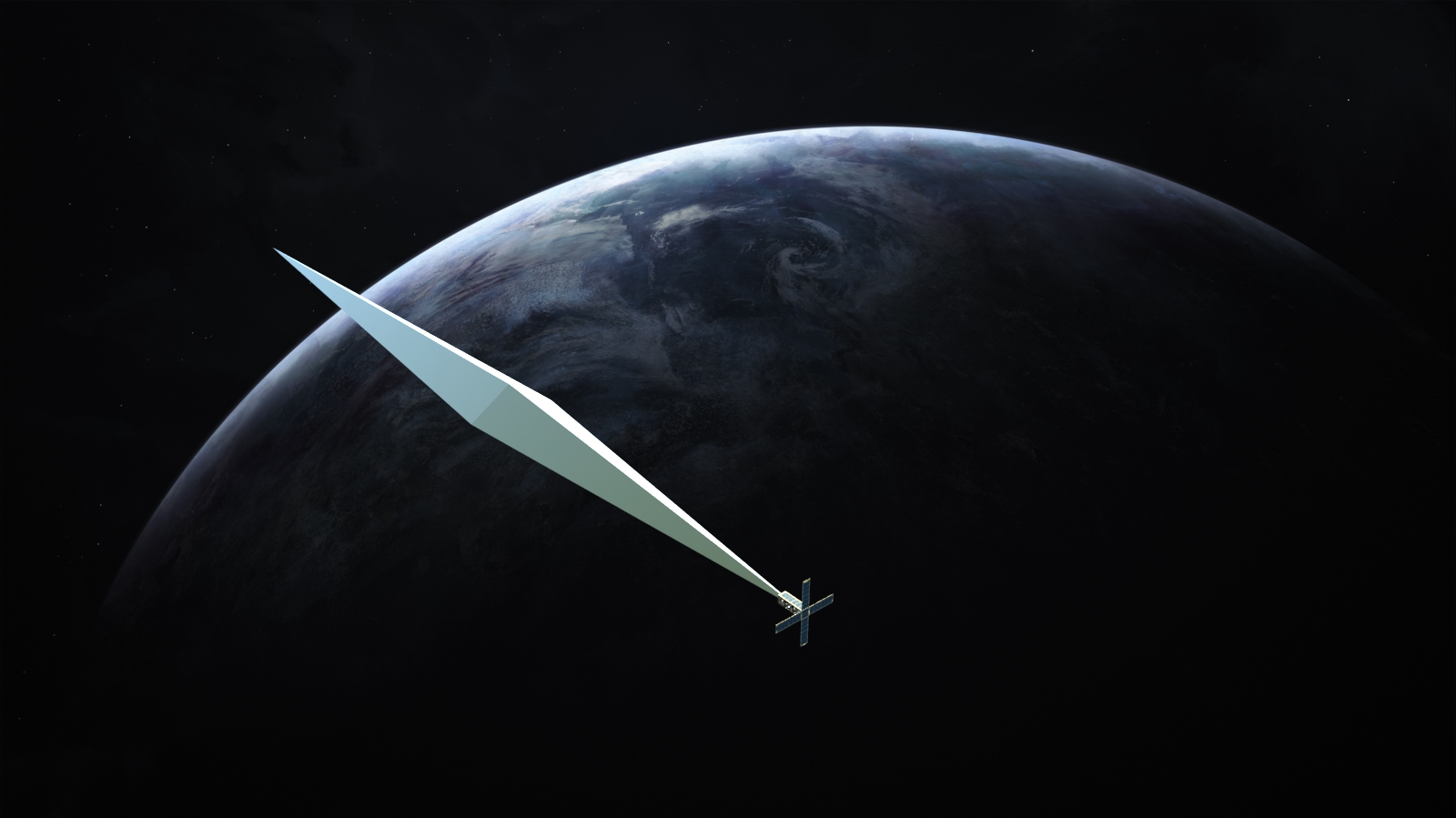An Artist Is Launching a 100-Foot Satellite That Will Be Visible to the Naked Eye

Credit to Author: Samantha Cole| Date: Thu, 28 Sep 2017 14:00:00 +0000
In space, nothing frivolous is tolerated. There’s plenty of beauty in the abyss of the universe, but relatively little of it is human-made. We build habitats, rocket ships, and satellites that can be beautiful in their own utilitarian ways, and we gain a lot of inspiration from what these devices see for us: Distant stars, awesome nebulas, our own home world. But art, made by humans, and actually installed in space? It’s not a thing. These is no space-based art world.
American artist Trevor Paglen hopes to change that next year. With Orbital Reflector, he’s planning to launch a sculpture into low-earth orbit, for terrestrial viewers to watch and track with an app. It’s a useless satellite, serving no purpose beyond the aesthetic.
It looks like a giant lawn dart or a hiltless sword flinging through space. The original prototype shape was a sphere, but he and his team redesigned the satellite to be a 100-foot-long stretched-out diamond shape for maximum reflective surface area, so it will be visible in the night sky with the naked eye from Earth. Around April 2018, it’ll be folded into a brick-sized package and packed into a CubeSat, which will be strapped to a SpaceX Falcon 9 rocket, blasted beyond the atmosphere, and then released to orbit roughly 350 miles above the surface of the Earth.
After two months, the sculpture will de-orbit naturally, slowed by the atmosphere and dragged back down by Earth’s gravitational pull. It’ll disintegrate on the way down.
This isn’t the first time Paglen’s experimented with putting things into space. In 2012, he launched The Last Pictures, a silicon disc holding one hundred photographs representing life on Earth, into geosynchronous orbit. A recurring theme in his work involves watching those powers that watch us, with photography exhibitions on the surveillance state and machine-learning algorithms.
The last time I spoke with Paglen, it was over Skype from his studio in Berlin, in February. Back then, he hadn’t announced the Orbital Reflector project publicly yet, but it was in the works—and he was already getting mixed responses. That hasn’t changed; many people are still skeptical or outright opposed to the idea of a totally “useless” satellite. There’s already enough space debris circling the planet, after all.
“I think that people think about space relative to progress,” he said when we met again in September. “And I think people see it as a part of a story that we tell ourselves about the advancement of civilization … this project, for me, anyway, is a repudiation of that, thinking about the fact that just as manifest destiny was motivated by war and plunder, so is spaceflight.”
Paglen, who describes himself as “very cranky about space,” maintains that most people are too sentimental about sending fragile humans and their expensive life support systems beyond Earth: “If I say I don’t think there should be manned spaceflight, people get offended.”
For some of the same reasons that make flinging humans into the far corners of our solar system difficult—cost, time, extreme difficulty—he doesn’t foresee a future of “space art.” Creators won’t be clamoring to fill the skies with sculpture anytime soon. “There is this desire to make [Orbital Reflector] about a ‘new frontier,'”
“For me, it’s must more complicated relationship to it than that… this is the more interesting way to think about space, in terms of limits: what are the limits of our ability to conceive of something else?,” he added, referring to the fact that we largely think of space as only exploitable by the military and commercial companies.
This project challenges the sentimentality and conquest of space, but it’s not without romanticism. It’s an excuse to look up, and to see a little bit of ourselves reflected in the night sky. “Just looking at the sky—it’s something that humans have been doing forever,” Paglen said. “It’s a way to try to think about our relationship to the Earth.”
Dear Future is a partnership with CNET that will explore the people, companies, and communities that are ushering in the future we were all promised. Follow along here.
https://motherboard.vice.com/en_us/rss